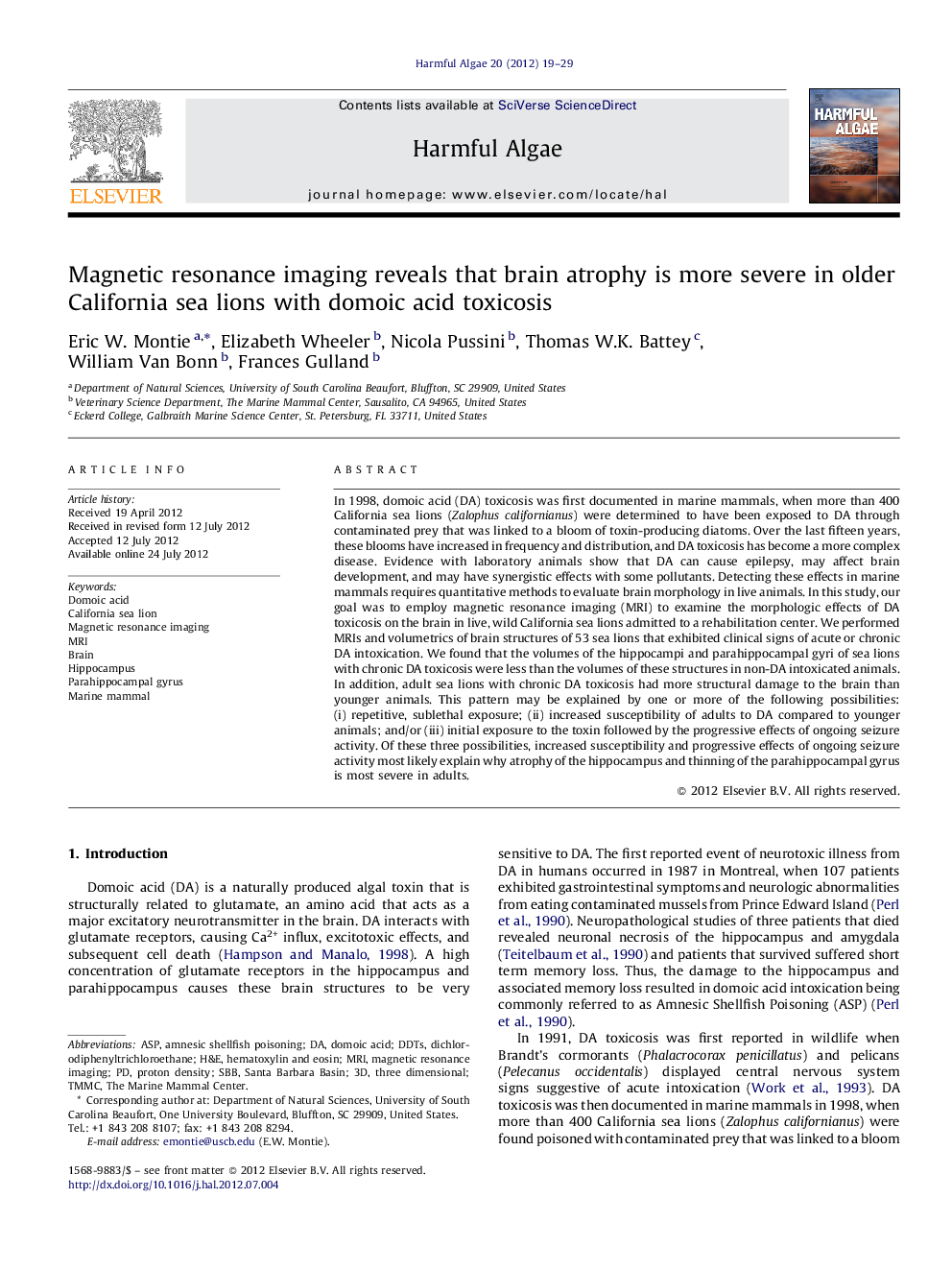| کد مقاله | کد نشریه | سال انتشار | مقاله انگلیسی | نسخه تمام متن |
|---|---|---|---|---|
| 6386284 | 1626950 | 2012 | 11 صفحه PDF | دانلود رایگان |

In 1998, domoic acid (DA) toxicosis was first documented in marine mammals, when more than 400 California sea lions (Zalophus californianus) were determined to have been exposed to DA through contaminated prey that was linked to a bloom of toxin-producing diatoms. Over the last fifteen years, these blooms have increased in frequency and distribution, and DA toxicosis has become a more complex disease. Evidence with laboratory animals show that DA can cause epilepsy, may affect brain development, and may have synergistic effects with some pollutants. Detecting these effects in marine mammals requires quantitative methods to evaluate brain morphology in live animals. In this study, our goal was to employ magnetic resonance imaging (MRI) to examine the morphologic effects of DA toxicosis on the brain in live, wild California sea lions admitted to a rehabilitation center. We performed MRIs and volumetrics of brain structures of 53 sea lions that exhibited clinical signs of acute or chronic DA intoxication. We found that the volumes of the hippocampi and parahippocampal gyri of sea lions with chronic DA toxicosis were less than the volumes of these structures in non-DA intoxicated animals. In addition, adult sea lions with chronic DA toxicosis had more structural damage to the brain than younger animals. This pattern may be explained by one or more of the following possibilities: (i) repetitive, sublethal exposure; (ii) increased susceptibility of adults to DA compared to younger animals; and/or (iii) initial exposure to the toxin followed by the progressive effects of ongoing seizure activity. Of these three possibilities, increased susceptibility and progressive effects of ongoing seizure activity most likely explain why atrophy of the hippocampus and thinning of the parahippocampal gyrus is most severe in adults.
⺠MRI was used to examine the effects of DA toxicosis on sea lion brains. ⺠Volumes of the hippocampus and parahippocampal gyrus were decreased. ⺠Adults with chronic DA toxicosis had more structural damage to the brain. ⺠Older sea lions are most likely more susceptible to chronic DA toxicosis.
Journal: Harmful Algae - Volume 20, December 2012, Pages 19-29